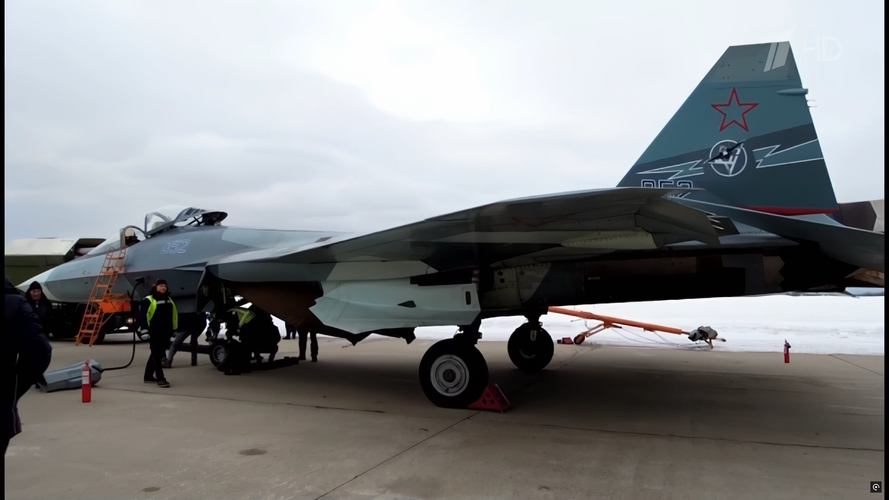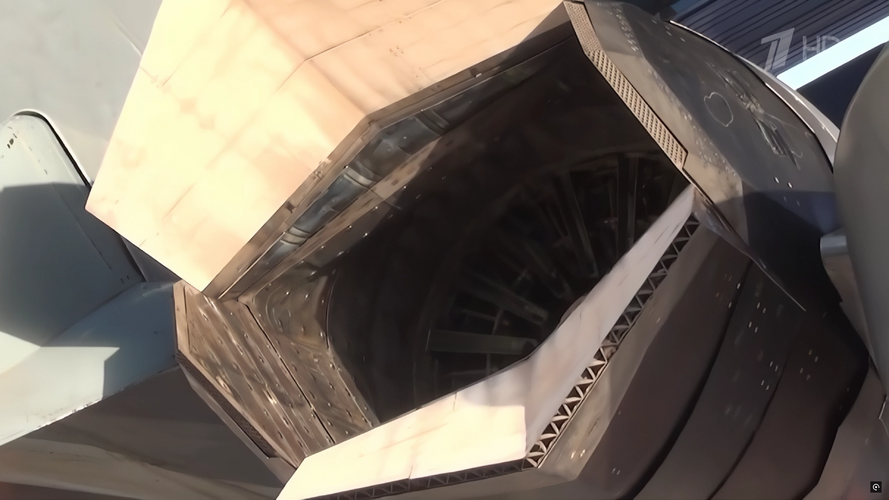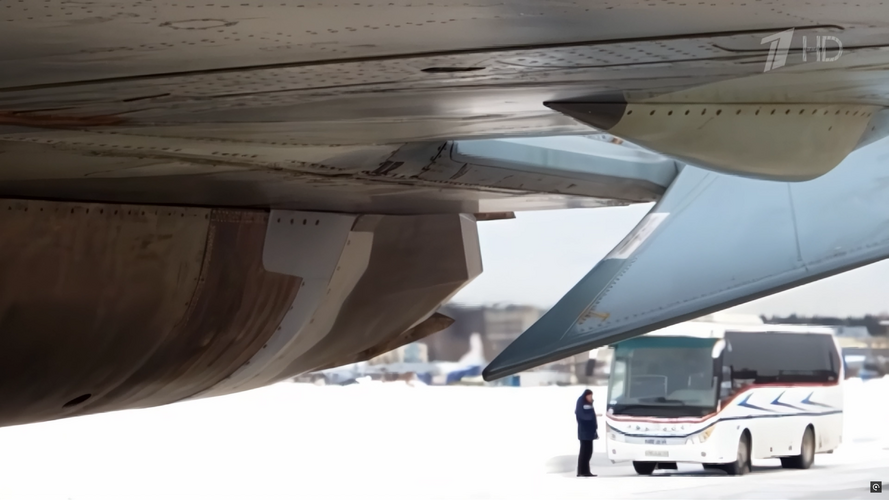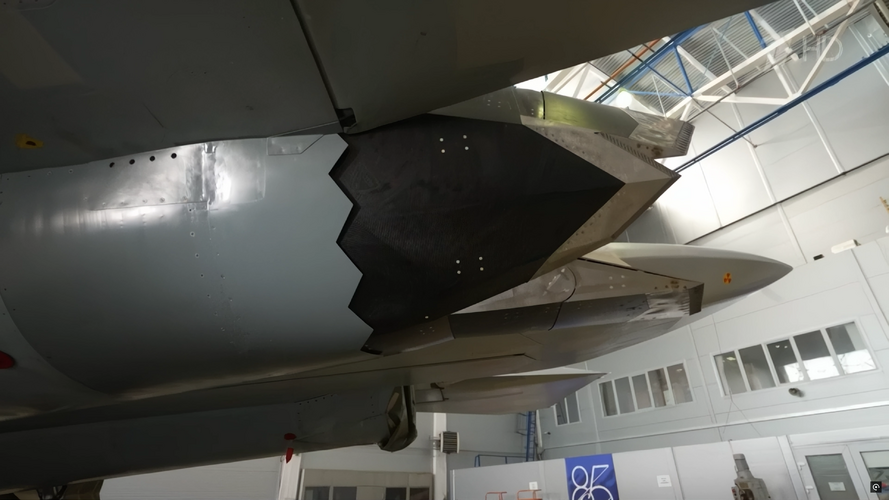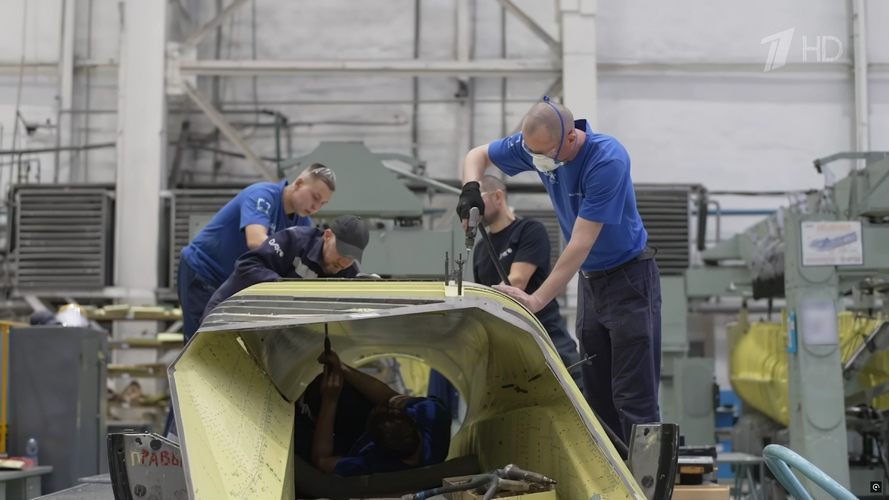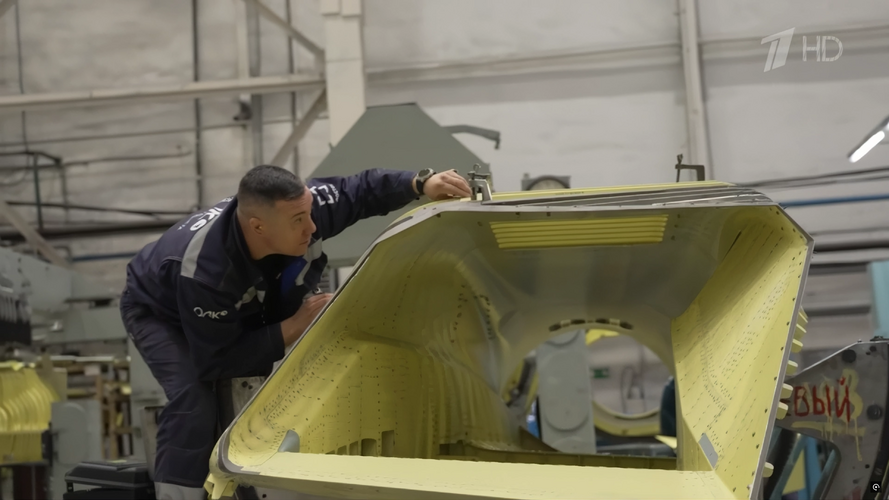There is some very interesting details about the engine with that new stealth flat rotating nozzle.As mentioned before, E.Marchukov said in 2019 that they developed new three-stream adaptive cycle ( 6th gen) engine in the same time as they develop 'second stage' engine Izd 30 later known as AL-51F.
Transl of citation:
''Plus stream , plus generation
In parallel with the development of the second stage engine for the Su-57, designers are already creating the scientific and technical basis for the sixth generation engines.First of all, research is aimed at improving the specific characteristics of the power plant compared to fifth-generation engines.
According to Marchukov, such a project involves adding a third external air stream to the power plant design. Thanks to this, it is possible to achieve low specific fuel consumption at supersonic cruising mode.
When flying at subsonic speeds, the third stream will be open. Thanks to this, the air flow from the fan will pass through the second and third stream and the engine will operate almost like a turbofan power plant with a high bypass ratio. In this mode, the power plant will have slightly greater thrust and significantly lower fuel consumption.
During supersonic flight, the third stream will be completely closed, and the second partially, due to which the engine will operate as a power plant with a low bypass ratio.''
On the ICAM-2020 held on May 2021 ,Marchukov said some very interesting details about that new engine.

icam.ciam.ru
''On May 18, 2021,
AEX.RU - A. Lulka Design Bureau - a subsidiary of"ODK-UMPO"is working on the formation of a scientific and technical backbone to create a sixth-generation engine for combat aviation. "This is a three-contour scheme, which the whole world is doing," Evgeny Marchukov, general designer of the Design Bureau, said at the ICAM-2020 conference. This is reported by the press service of the MAKS Air Show.
According to him, two options for implementing this scheme are being developed. The first stand tests of the demonstrator are due to take place in 2021. Using a three-contour scheme will allow to modernize the AL-41F-1 engine, improving its characteristics while maintaining dimensions.''
In fact,new Russian 6th gen engine ( three-stream adaptive cycle engine) was developed and is based on AL-41F-1 not on AL-51F( or F-1 never mind).
Now,let us hear what Marchukov said about engines from 1:44:20. It was at international scientific-technical conference from ODK achievements on Samara's University held on June 23 2023.First he mentioned AL-41F-1S for Su-35S and exported Su-35 ( from 1:44:50) .After that he talked about AL-41F-1 as '5-' gen engine because that engine does not provide supercruise capability to Su-57 ( from 1:45:52) After that he mentioned new Izdeliye 177S as 5th gen engine only for export ( for the Su-30SME,Su-30MKA,MKI,MKM etc ,from 1:46:32 ). Then he talked about Izdeliye 117B as non-AB engine for UCAV S-70 Hunter-B ( from 1:47:30). After that he talked about Izd 30 even he didn't mention designation and some technical details about it ( from 1:48:48). From 1:50:10 he talked about ODK's engines development phases and trends especially about 6 gen engine and technological achievements.Then from 1:51:28 he mentioned about that third stream as technology for 6 gen engines.In this part he talked about Izd 117 as basis for that new engine as they started 'from the 0' to develop such engine. Then from 1:52:17 we can see blured pic with that 'green engine' on the screen.
He said that it is 'stendovy variant dvigately' or it is the engine for static tests.One of the achieved results was 5% less consumption on cruise mode and he hope that in the real flight conditions it will be up to 10%. It is 'Product with third stream' as he mentioned'. It is of course adaptive cycle engine. From 1:53:17 there was story about its components and parts ( even meta-materials).Story about this new flat nozzle started from 1:54:13. He told that losses of thrust are not so high.Nozzle is made 90% from so called additive technology.He told that he hope nozzle will start flight tests during 2023. From 1:55:44 we can hear some details about other parts and components of the 6 gen engine like ceramic chamber e.g ( that nozzle is also made from ceramic materials) and other metallic parts.According to what he said then ,ceramic chamber was on static tests at the end of 2023.
Source:
https://m.vk.com/video-69812_456239...nNk3lHRyO-ipIc-TTA_aem_rAkjogYjr1rJVv-a8s65Xw
Although this is only an illustration,engine with new flat nozzle is completely different in comparison with AL-51F-1 / AL-41F-1.
Изображение 1000021637 расположенное в Radikal.HOST (Радикал.ру)

radikal.host



? See at 0:32 in the video (please view at 0.25x speed).

